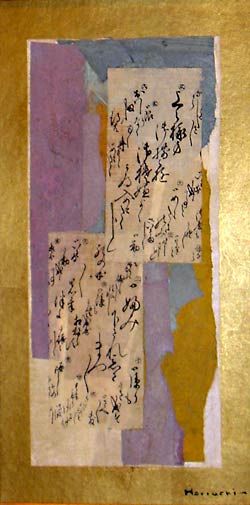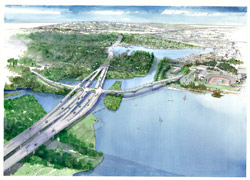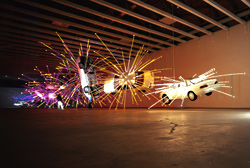There is perhaps nothing “new” in the latest exhibit of work by the Northwest collage artist and painter Paul Horiuchi. He died seven years ago, in 1999, and had stopped painting even earlier, in 1995, when his health began to fail. You go to see the Horiuchi show to appreciate the quiet elegance of his work (Poem in Blue), his rich textures, his poetic ability to communicate wordless messages through torn edges and juxtapositions of ornate gold leaf with more muted colors, or to notice the subtle subversion of his use of ancient calligraphy—found art, for him—which he cut up and sometimes incorporated into his work upside-down (Remnants of Ancient Script). The actual meaning of the words themselves weren’t as important to him as the interrupted symmetry of the sampled symbols. And then there’s the natural abstract expressionism of his older work from the 1960s, like the vast white and simple black accents of Winter White from 1968, which vividly evokes dark gashes in snow. “Maybe I’m old-fashioned but I’m seeking beauty and truth in nature,” he once said. It’s also been said that the remnants and ripped edges of Horiuchi’s collages reflect memory and loss. Indeed, much of the life of this Japanese-born artist was not easy. But the torn quality of his favored medium also reflects the uneven, weathered lines found in nature, and the connection gives these pictures serenity and strength. The 22 paintings in this centenary exhibit represent a carefully gathered survey of the prolific artist’s work from 1959 to 1990. It’s healthy to revisit artists who have come before us, both as a humbling reminder of all that has already been done and as hopeful evidence of the lasting nature of genuinely inspired art. Woodside/Braseth, 2101 Ninth Ave., 206-622-7243. 11 a.m.-6 p.m. Tues.-Sat. Ends March 18.
Paul Horiuchi








